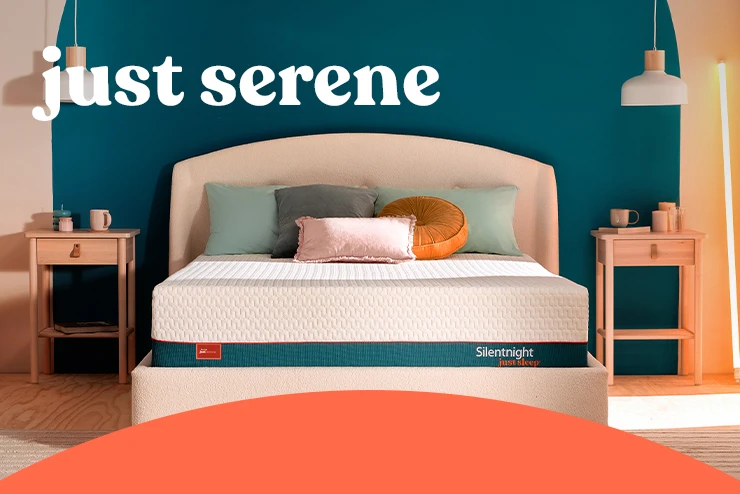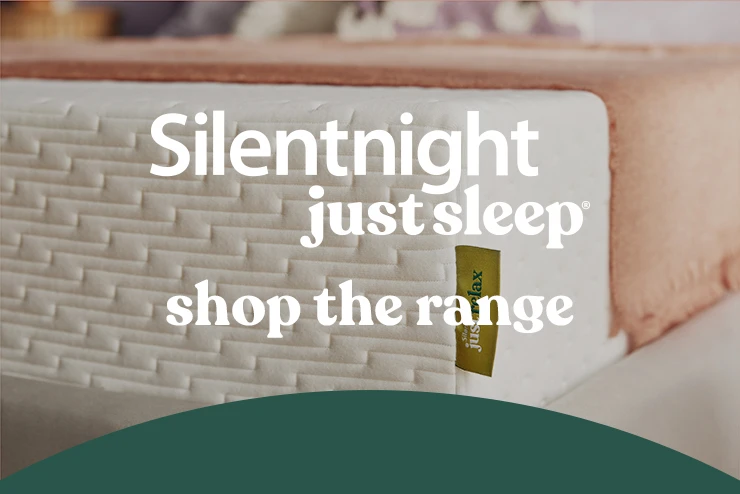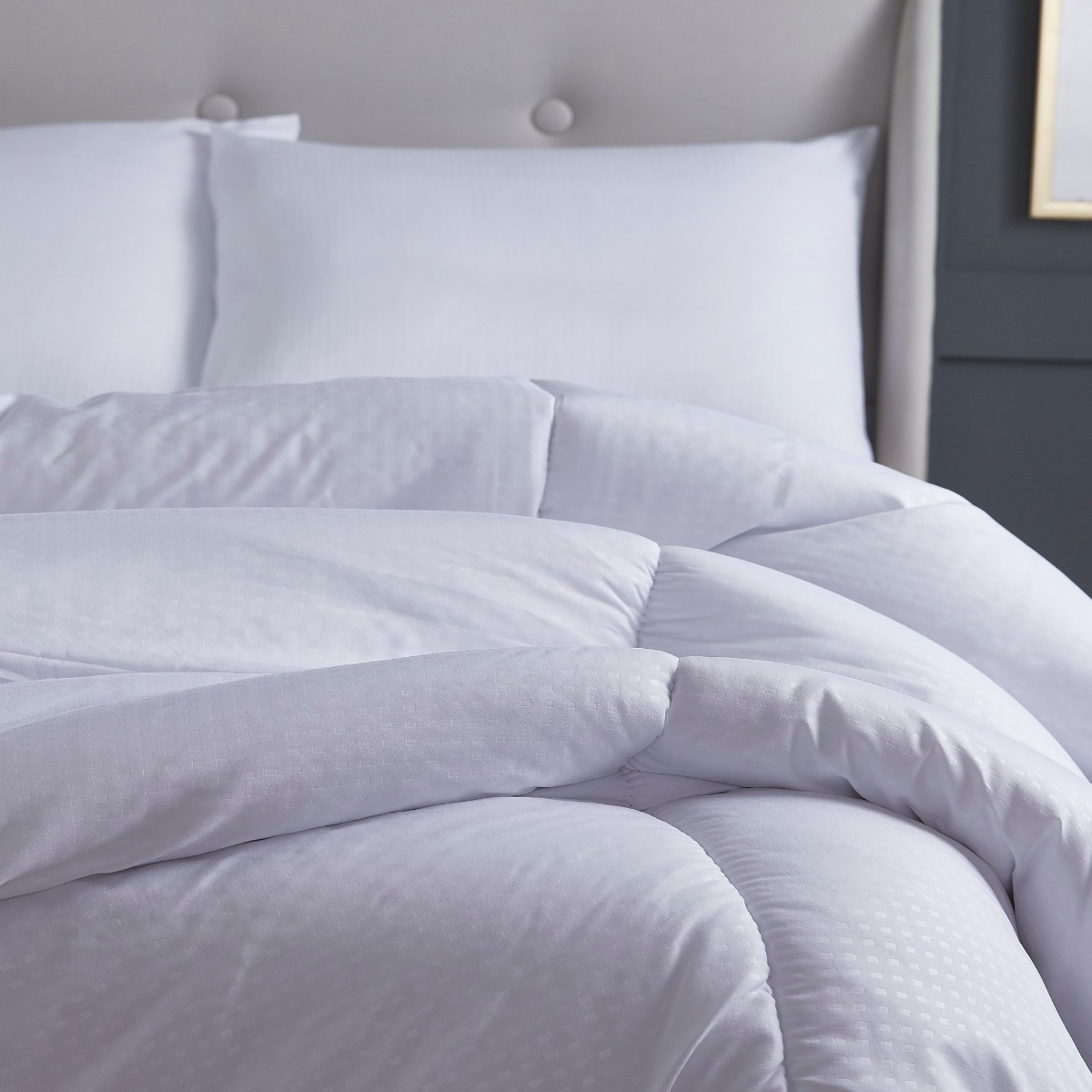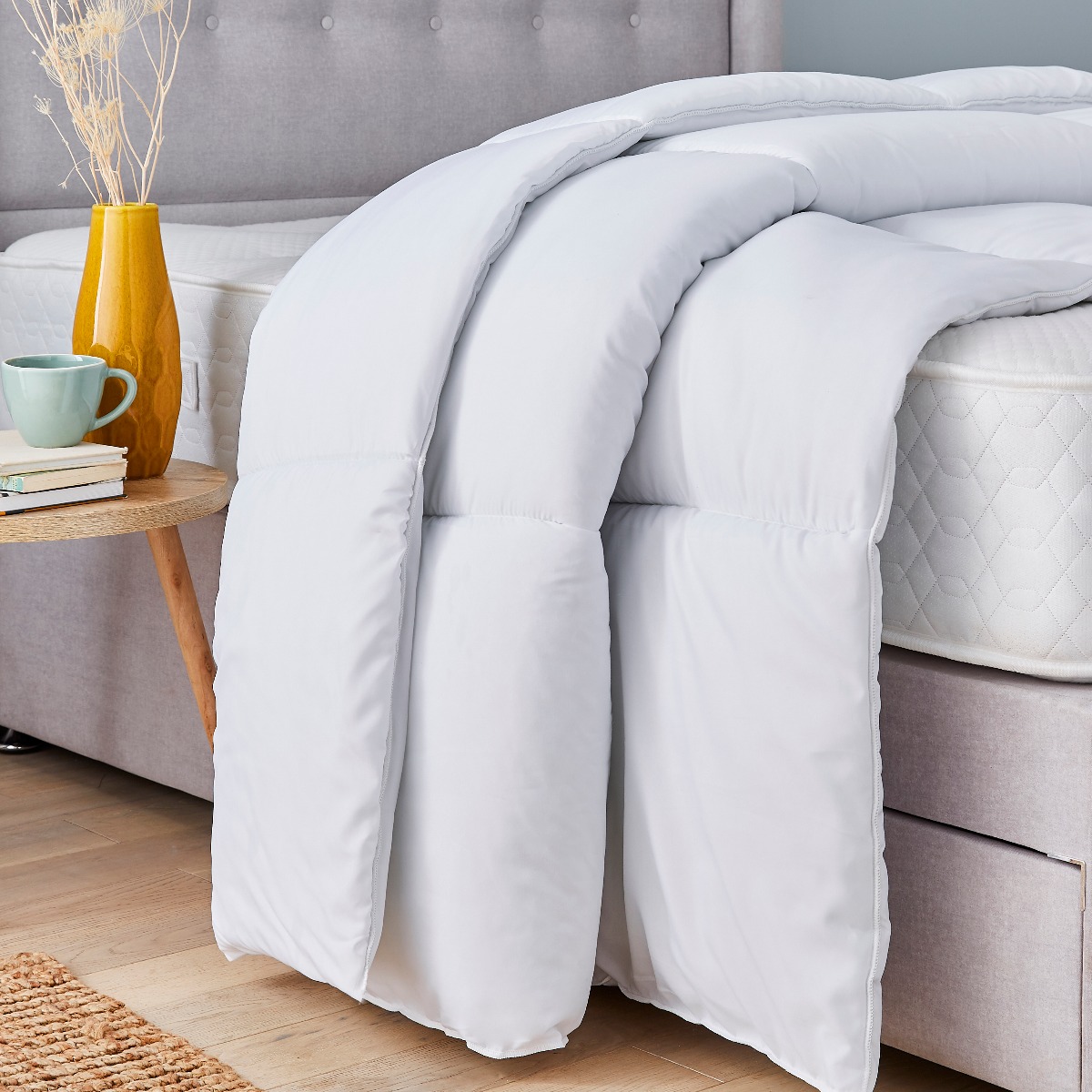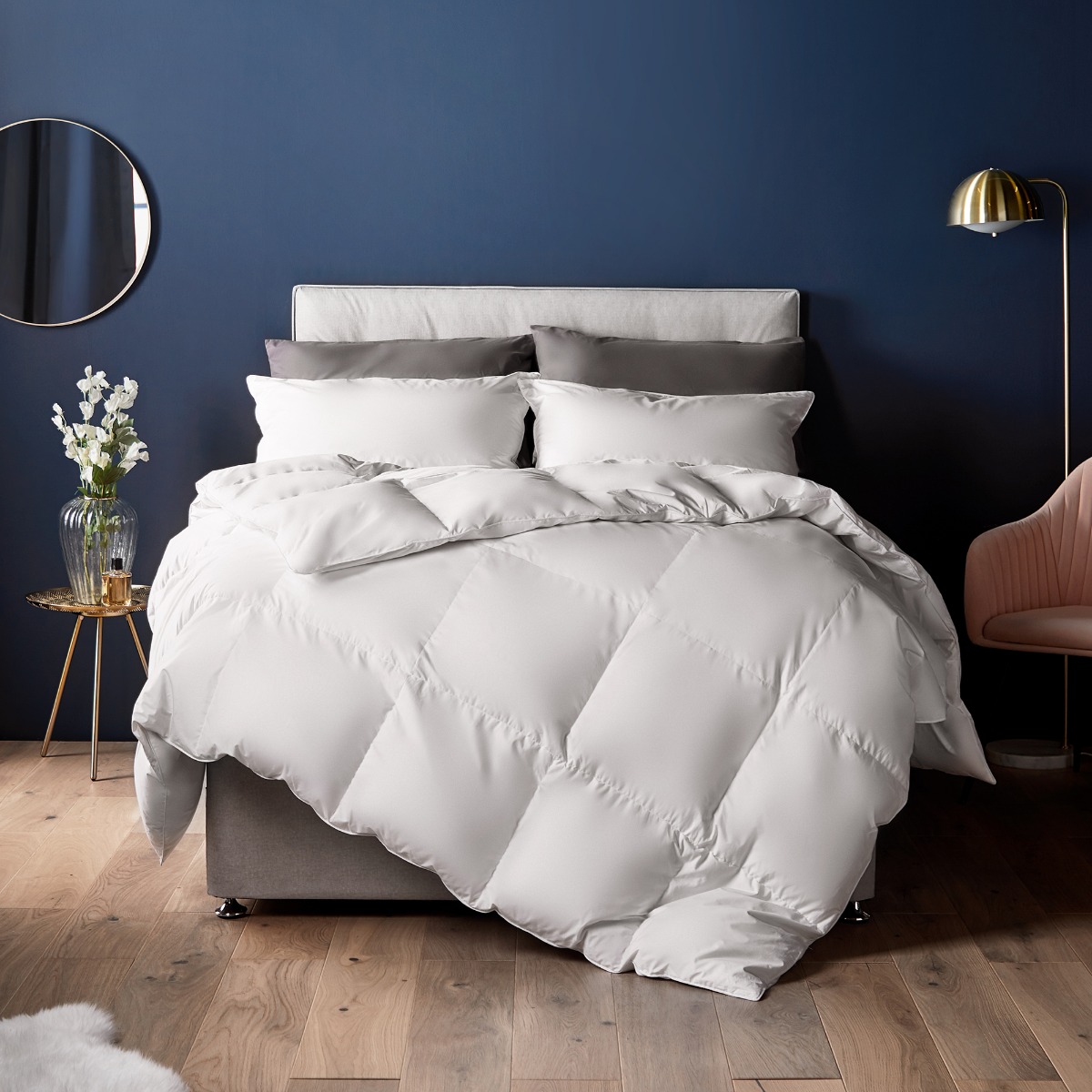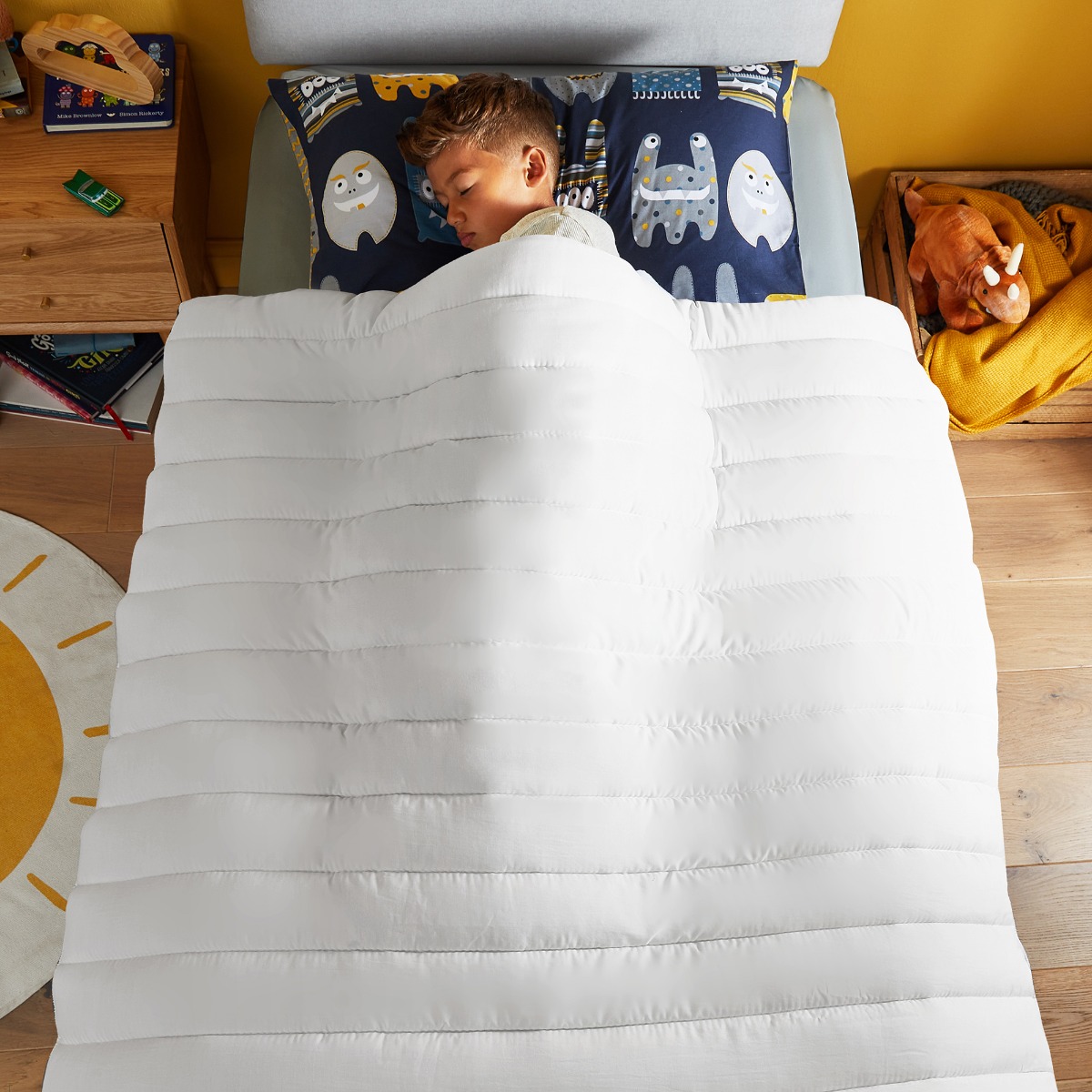duvet buying guide

duvet buying guide
Choosing the right duvet can make all the difference to your sleep. While it might not get as much thought as your bed or mattress, the right duvet wraps you in comfort, keeps you cosy and helps create a breathable sleep environment. We’re here to help you find the perfect duvet for dreamy nights. From togs and fillings to the different types we offer, we’ll guide you through everything you need to know. Plus, we’ll share tips on how to care for your duvet so it stays just as inviting as the first night you snuggled under it.
what is a duvet?
A duvet is a soft, quilted blanket filled with materials like feathers, microfibre or down. It’s designed to wrap you up in warmth and comfort as you drift off to sleep. You can easily change the look of your duvet with duvet cover sets to match your bedroom and create the perfect sleep sanctuary. Continue reading to discover what to look for when choosing the best duvet for you.
1. the best duvet filling
There are two types of duvet fillings you can opt for: natural and synthetic. Both of these offer several pros and cons, depending on your preferences and budget. Let’s take a look into both:
natural fillings
Naturally filled duvets usually use down or feathers to maximise plumpness for the ultimate comfort.
Feather duvets use the outer layer of a bird’s wings. These duvets are more budget-friendly and offer fantastic support while being more allergy-friendly.
Down duvets use the undercoating of a bird’s chest. Down duvets are more expensive, but they offer fantastic insulation and are lighter and more breathable.
You can also find wool and silk duvet options, which are fantastic for their moisture-wicking properties, breathability and allergy-friendliness.
synthetic fillings
Synthetic fillings tend to be a lot more affordable and easier to maintain, but they’re unlikely to last as long as naturally filled duvets. Often, synthetic duvets use microfibre or hollowfibre as filling, which are made up of processed polyester to mimic the feeling of down or feather duvets.
Microfibre uses extra fine polyester fibres, adding a lighter and more luxurious touch. You’ll also find that microfibre duvets are much more breathable than hollowfibre while offering a more aesthetically pleasing look when laid over the bed.
Hollowfibre is a lot thicker and plumper, without being too heavy. These duvets tend to last longer and are hypoallergenic, making them ideal for sensitive and allergy-prone sleepers.
Don't forget, there are also eco-friendly alternatives available, like our sustainable duvets that use recycled fibres for planet friendliness. These are also a great hypoallergenic option.
2. let’s talk duvet tog ratings
What is a duvet tog and why does it matter? A duvet tog refers to the warmth measurement of a duvet; the higher the rating, the warmer it is. This is just as important as the filling when buying a duvet as it ensures proper temperature control all year long. Here’s our quick overview of duvet togs:
1.5–4.5 tog: Low tog ratings, ideal for summer
7–10 tog: Medium tog ratings, suitable all year round
10.5–15 tog: High tog ratings, perfect for winter cosiness
The most common tog rating in the UK is a 10.5 as it reduces the need to switch it out as each season hits. For the perfect middle ground, some duvets offer interchangeable layers, making them super versatile. Shop our seasonal duvets to stay extra comfy when the weather changes.
can I use the same duvet year-round?
Yes – one of these tog options may suit you year-round, especially our most popular 10.5 tog which is designed to be used throughout all seasons.
3. the perfect fit matters
The size of your duvet matters just as much as its tog rating and filling. While most duvets are designed to match standard mattress sizes, there are instances where you may want to go bigger or smaller. Snuggling up with the right-sized duvet can make all the difference for a cosy, uninterrupted night’s sleep.
Here’s a look at the UK standard duvet size guide:
Single: 135 x 200 cm (53 x 79 inches) – ideal for standard single beds
Double: 200 x 200 cm (79 x 79 inches) – fitting most double mattresses
King: 225 x 220 cm (89 x 87 inches) – for king-size beds
Super King: 260 x 220 cm (102 x 87 inches) – suited for larger, super king mattresses
Choosing a duvet that matches your mattress size means it's less likely to overhang or leave you feeling cold due to being too small. If your bed is uniquely shaped, a custom-sized duvet might be the way to go. For children, look for lightweight, smaller duvets to keep them safe and snug through the night. Top tip: Upsizing your duvet can make your bed feel cosier and help you drift off without disruptions. If you share a bed, a king-size duvet on a double bed could be the key to avoiding those midnight tug-of-war games. Plus, the extra draping effect adds a touch of luxury, giving your bed that indulgent, hotel-style plush aesthetic.
what’s the difference between a duvet and a comforter?
A duvet is usually made up of two elements: the duvet and its cover. A comforter, on the other hand, usually sits on top of a duvet to be used as an extra layer of warmth, a much more popular addition to beds in America.
4. preference is everything
Don’t forget, your preference also plays a big role in what duvet you purchase. It’s not about the best duvet; it’s about the best duvet for you. Here’s what you should consider:
Hot or cold sleepers: Finding the right material and tog rating will help you achieve that perfect temperature. Hot sleepers might prefer lightweight options, like a low or medium tog with microfibre or feather filling. If you’re always chilly, go for 10.5+ togs with cosy down or hollowfibre fillings to stay toasty.
Allergy sufferers: If you’re allergy-prone, stick to hypoallergenic duvets and invest in dust mite treatments for added peace of mind. Materials like hollowfibre and feather fillings naturally repel dust mites, helping you breathe easier.
Weighted options: Do you find weighted blankets calming? You’ll likely find a heavier duvet offers the same benefits. Not only may you feel a strong sense of comfort, but mimicking the likes of a hug can be very therapeutic.
Thicknesses: The thickness of a duvet can contribute to your comfort levels too. Maybe you don’t like duvets bunching up near your face while snoozing, making thicker duvets of 10.5+ togs unsuitable.
5. making sustainable choices
Sustainable living is becoming more and more common, with many people making greener choices in everyday purchases, including one’s bed set-up. With that in mind, there are several eco-friendly duvet material options available. Eco-friendly duvet fillings include natural fibres like wool, down and bamboo. By choosing these natural fillings, you’re making an environmentally conscious choice without compromising on comfort. For extra confidence, look out for certifications such as OEKO-TEX (safe textiles) and GOTS (Global Organic Textile Standard).
Learn more on how Silentnight is leading the way in sustainability in our helpful blog.
6. time to budget
Once you know what type of duvet you’re looking for, it’s time to match it to your budget. How much you spend on a duvet comes down to personal preference; by investing, you’ll likely be given longer-lasting quality, whereas a budget-friendly option may need to be replaced after 1-2 years. Don’t worry, we always offer affordable and quality-assured duvet options at Silentnight, giving you extra peace of mind.
7. caring for your duvet
Now you have the ingredients for a duvet that ticks all your boxes, it’s time to focus on keeping your duvet fresh and clean for years to come. Below are some commonly asked questions to give you an idea of the level of maintenance for each type of duvet.
can you wash a duvet?
Yes – all duvets are machine washable, but the cycles may differ depending on the filling. Wash your duvet at least once a year to maintain its freshness and hygiene.
how do you wash a duvet in a washing machine?
Synthetically filled duvets can easily be popped into the washing machine on a gentle cycle at 40°C and using a mild detergent. Down or feather-filled duvets are also machine washable, you may just need a larger drum. For natural fillings, we recommend a delicate cycle at 30°C with a down-friendly detergent.
how do you dry a duvet?
Duvets can be dried in several ways – including on the washing line or in a tumble dryer on low heat. Always opt for air-drying if possible as this will prevent the filling from clumping. Please note, you should always check the care label of your duvet for instructions.
how often should you replace your duvet?
You should replace your duvet every 5-10 years, depending on how much it’s used and the type of filling it has. Synthetic versions tend to need replacing sooner than naturally filled duvets as they lose their shape much faster.
when should you replace your duvet?
You should replace your duvet when lumps or unevenness form within the filling, or if you experience loss of warmth, plumpness or persistent stains and odours.
how do you store a duvet
Do you own spare duvets for when the seasons change? Storing them in the right way will ensure they stay clean, fresh and ready to be used. We recommend:
Use breathable storage bags to prevent unwanted odours and moisture build-up.
Keep duvets in a cool, dry place so that direct sunlight doesn’t impact their quality and dampness doesn’t cause mould.
Ensure it’s completely clean and dry before you store it to avoid mould or mildew build-up.
FAQs
Have more duvet questions? Read on for our expert answers.
how do you put on a duvet cover?
There are plenty of ways to make this task easier, but a good hack is to turn the duvet cover inside-out, then slip your hands into the far corners. Grab the matching corners of your duvet, flip the cover over, and shake it gently into place. Once it’s all snug, fasten it up.
what tog duvet for winter?
For those chilly winter nights, a duvet with a tog rating of 10.5 to 15 is perfect for keeping you cosy without waking up shivering. It's the ideal layer for hibernation-worthy sleep.
what tog duvet for toddler?
The ideal tog rating for a toddler's duvet depends on their age, the temperature of their room, and the size of their bed. Usually, a toddler’s duvet should be light at a 3.5-4 tog rating, increasing to 7.5-9 as they grow.
what do you do with old duvets?
When it’s time for a duvet upgrade, think sustainably. Old duvets can be donated, upcycled into cushions or pet beds, or recycled at textile banks. Giving them a second life is as comforting as a good night’s sleep.
shop duvets
Check out our range of supple, super soft and warming duvets to aid your quality of sleep.




